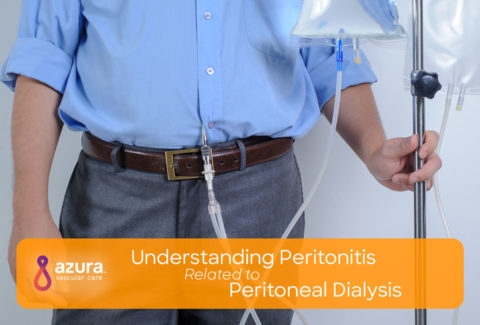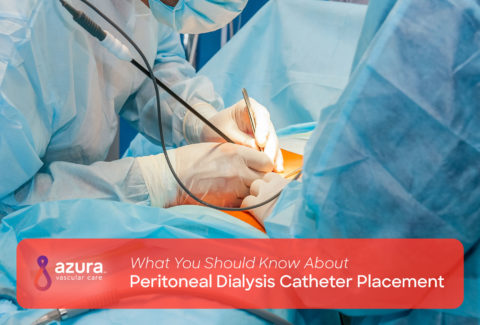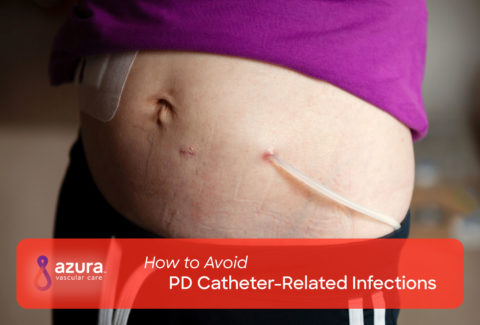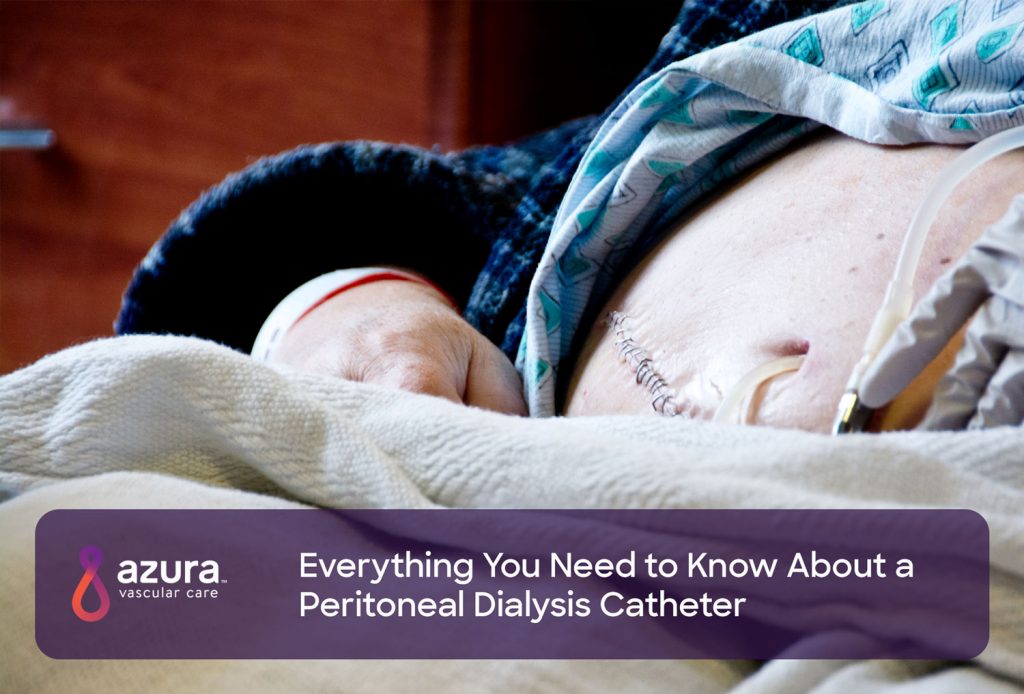
If your kidney function has fallen to between 10 and 15% of normal, you will most likely need to begin dialysis. By far the most common type of dialysis is hemodialysis, a process in which your blood is transferred to and from an artificial kidney called a dialyzer where it will be cleaned.
A type of dialysis, called peritoneal dialysis (PD), can be an option for some people. But before you can receive peritoneal dialysis, you need to have an access, or peritoneal dialysis catheter, placed.
What is Peritoneal Dialysis?
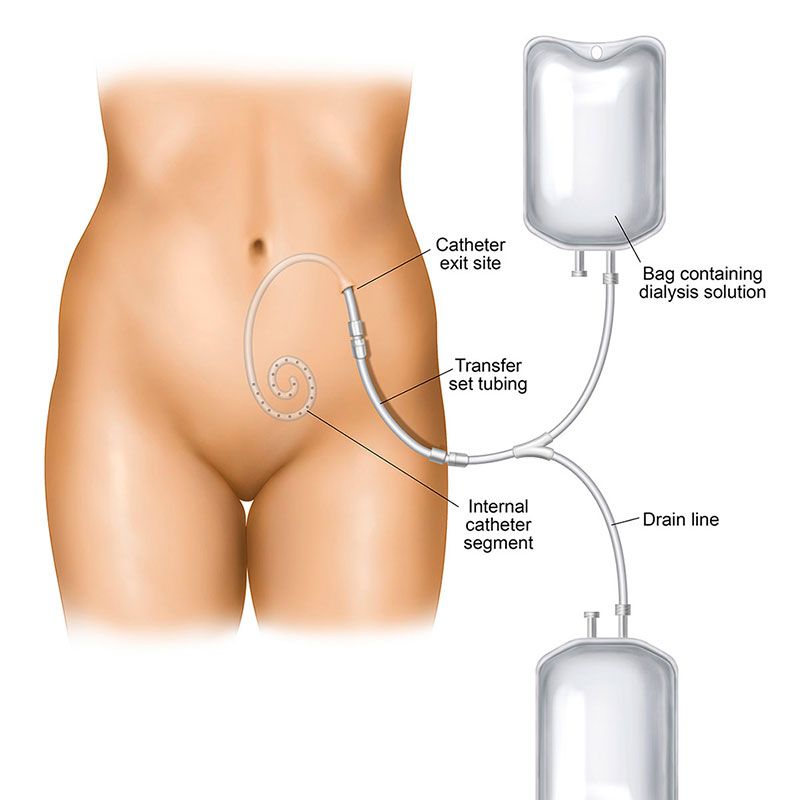
In peritoneal dialysis, blood does not leave your body like it does with hemodialysis. Peritoneal dialysis (PD), uses your peritoneal membrane – the lining of your abdomen – and a dialysate solution to rid your blood of the toxins your kidneys can no longer eliminate.
How Is Peritoneal Dialysis Performed?
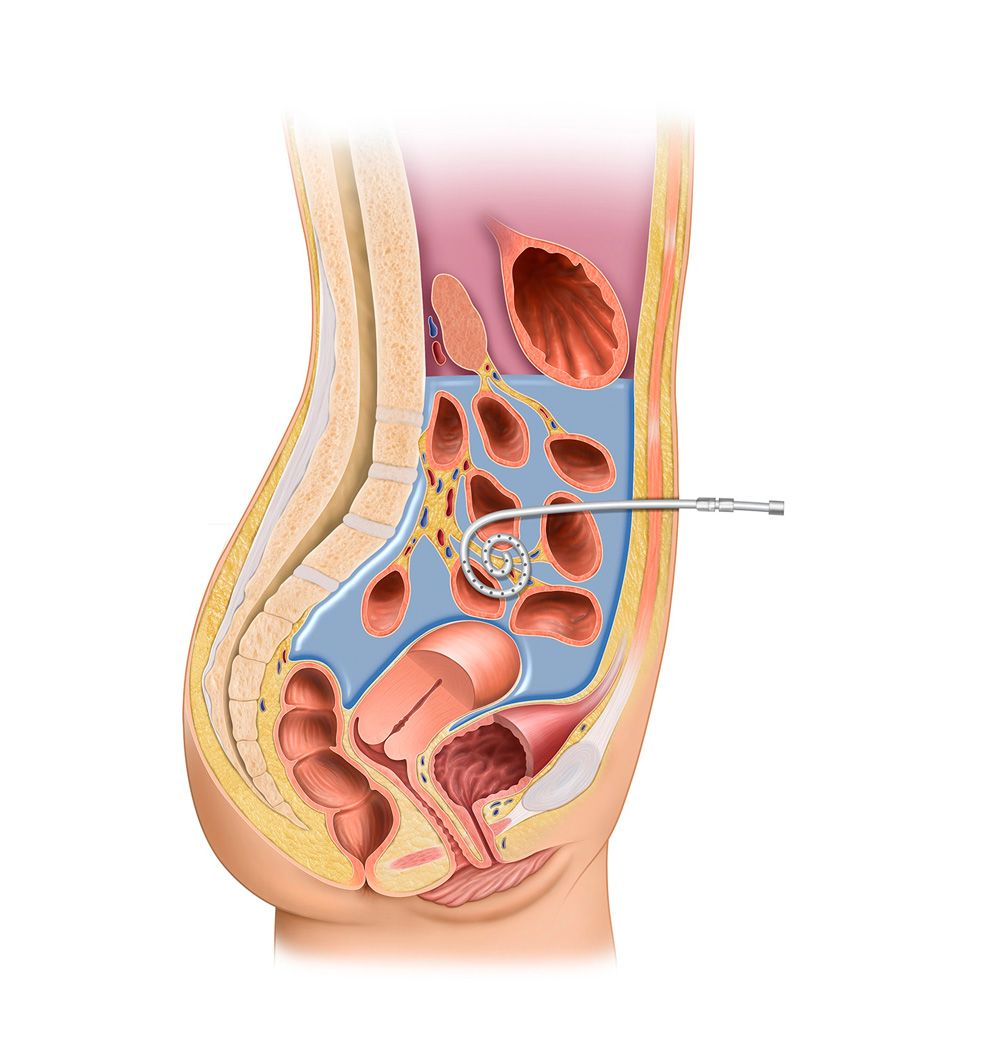
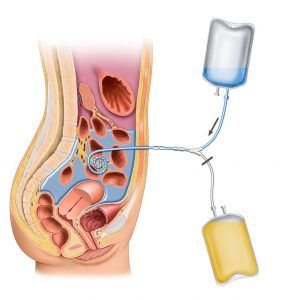
The peritoneal dialysis catheter is placed through the abdomen and into the peritoneum. A sterile fluid is instilled through the catheter into your peritoneum to clean the blood inside your body. You or your caregiver can perform this at home.
If you and your doctor decide that PD is your best option, you will first need a peritoneal dialysis catheter, or PD catheter. PD catheter placement is a minimally invasive procedure that can be done either in a hospital setting or in an outpatient setting by a vascular specialist.
Prior to the procedure, you will be given a local anesthetic, or in some cases a general anesthetic may be used. Your vascular specialist will then make a small incision, where the catheter will be introduced. The catheter is then threaded through a “tunnel,” secured in place, and covered by a sterile dressing over the point where the catheter was placed.
You will likely be able to return home several hours after the procedure, and you may need to take painkillers for a few days following the procedure.
Who Can Get a Peritoneal Dialysis Catheter?
Not everyone is a good candidate for PD. You likely will not be able to receive PD if you:
- Have an abdominal hernia
- Have inflammatory bowel disease
- Have recurring diverticulitis
- Have large surgical scars on your belly
Caring for Your Peritoneal Dialysis Catheter – Short Term
Peritoneal dialysis is associated with a high risk of infection.iii Potential infection can occur:
- In the actual lining of your abdomen
- In the tunnel that the catheter is threaded through
- At the site where the catheter exits your body
For the first 7 to 10 days after having your peritoneal dialysis catheter placed, you will need to leave the bandage in place. Do not change it. If the bandage must be changed, it needs to be done by a trained peritoneal dialysis nurse in a sterile environment to prevent infection.
You’ll need to take additional precautions as well until your access is completely healed, including:
- Keep your access site area dry – no showering, baths or swimming
- Do not attempt any heavy lifting or strenuous exercise
- If you are constipated, talk to your doctor – straining to have a bowel movement can lead to problems with your catheter iv
Caring for Your Peritoneal Dialysis Catheter – Long Term
As long as you have a PD catheter, you’ll need to follow a care program. Your long-term care program includes:

- Frequent hand washing
- Washing your access site as determined by your PD nurse
- Keeping your access site dry
- Not picking at scabs or the skin around your access site
- Using sterile technique whenever taking the cap off of your catheter to instill or drain the PD solution
- If prescribed, applying antibiotic cream when changing your dressing
Related: Concerns and Precautions to Consider with Peritoneal Dialysis and Pets
Advantages of a Peritoneal Dialysis Catheter
Peritoneal dialysis is an alternative to hemodialysis. But infection is a frequent complication of PD. For patients who cannot tolerate hemodialysis, or select PD as their treatment option, a PD catheter is the only option for access.
- It is an outpatient procedure
- Needles are not used, unlike with AV fistulas and AV grafts
- Dialysis is performed at home
- You do not need a temporary central venous catheter with urgent start PD v
Disadvantages of a Peritoneal Dialysis Catheter
Despite clear advantages to having a PD catheter, there are two major disadvantages:
- For as long as you have a peritoneal dialysis catheter, you will not be able to take a bath or go swimming.
- The risk of infection is higher with a PD catheter than with an AV fistula or graft.
PD catheters are not for everyone. Talk to your doctor about whether or not this may be the best course of treatment for you. And above all, be sure you understand all the types of dialysis access out there so you can feel confident in your choice of treatment.
Sources:
i United States Renal Data System. Accessed from: https://www.usrds.org/2015/view/v2_04.aspx?zoom_highlight=fistula%20at%20initiation
ii Mayo Clinic, Peritoneal Dialysis. Accessed from: http://www.mayoclinic.org/tests-procedures/peritoneal-dialysis/details/why-its-done/icc-20202870
iii Akoh, J. A. (2012) Peritoneal dialysis associated infections: An update on diagnosis and management. World Journal of Nephrology 1(4): 106-122.
iv Burkart, J. M. (2016) Patient Information: Peritoneal dialysis (Beyond the Basics). Waltham, MA: UpToDate.
v Ghaffari, A. (2016) Urgent-start peritoneal dialysis. Waltham, MA: UpToDate. Accessed from: http://www.uptodate.com/contents/urgent-start-peritoneal-dialysis
